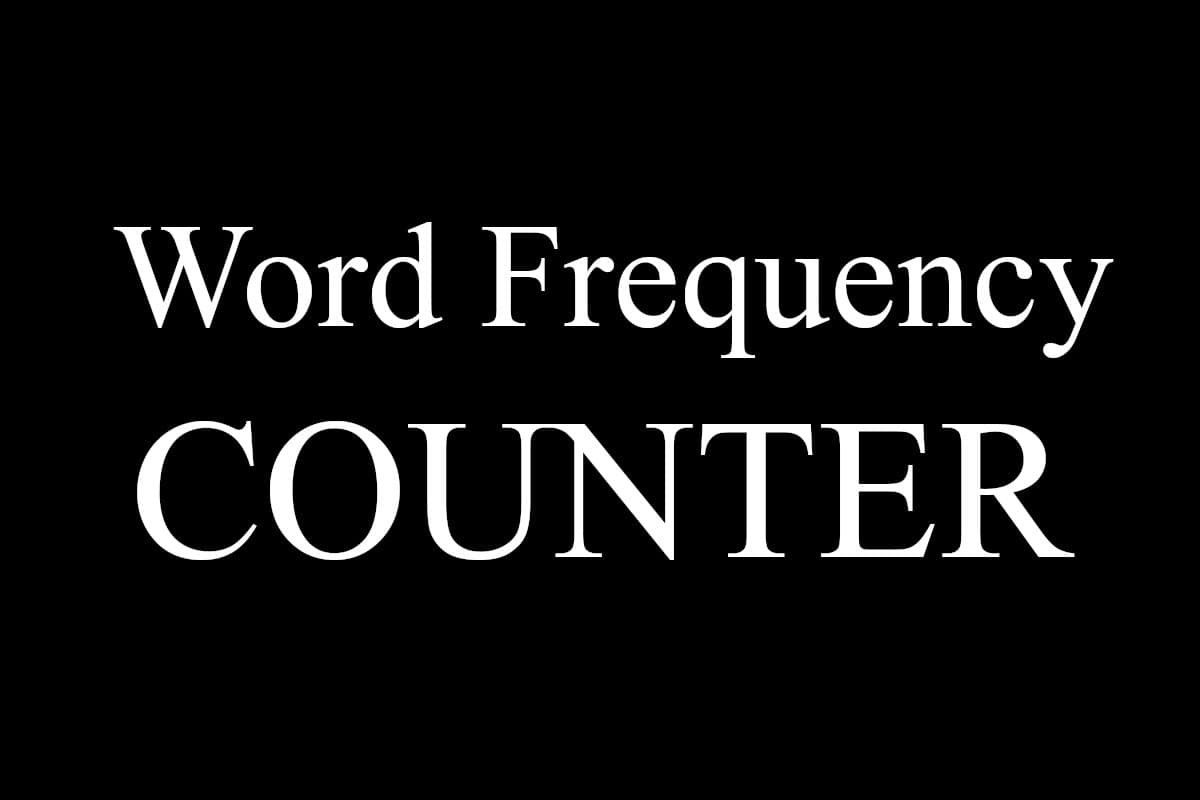Word frequency counters are essential tools for text analysis, providing valuable insights into the patterns and structures found within a body of text. These tools count how often each word appears, allowing users to identify common terms and analyze word usage. They are beneficial not only for linguistic researchers but also for writers, educators, and marketers who want to understand the emphasis and repetition in their content.
Modern word frequency counters offer a variety of features, ranging from basic word and character counts to more sophisticated analyses, such as identifying parts of speech or lemmatizing words—grouping different forms of the same word together. By assessing word frequency, one can gain a clearer perspective on the text’s focus and style, highlighting overused words and pinpointing the prominence of certain themes.
First Word Frequency Counter
Paste your list below and click “Count Words”. The program will extract the first word from each line and display its frequency.
Key Takeaways
- Word frequency counters assist in uncovering patterns in text, aiding various users.
- These tools provide both simple word counts and complex text analyses.
- A clear understanding of word frequency can enhance content creation and review.
Technical Overview
To understand how a word frequency counter works, one must grasp the programming fundamentals that drive frequency analysis, handling text data, and optimizing performance.
Programming Basics for Frequency Analysis
Word frequency analysis begins with a script that is written to read and interpret text. Programmers use various programming languages to create such programs. They focus on how often each word occurs in a given piece of content. A word frequency counter can be a powerful tool for tasks like content optimization.
Text Processing and Counting Mechanics
Processing text involves converting raw content into a format that a program can easily analyze. This means breaking down the content into individual words and characters. To count word frequency, a common method is to use a data structure like a hash table. This stores words as keys and their frequency of occurrence as values.
Optimization Techniques for Performance
To optimize a word frequency analysis tool, developers employ several strategies. They make processing faster and more efficient. One such strategy includes using efficient data structures for quicker lookups. It’s also key to write the script to perform well across different browsers and devices. This is known as cross-browser testing.
Remember, this section aims to provide an overview of the technical aspects critical to developing and utilizing a word frequency counter. These include understanding the programming basics, the mechanics of text processing, and how to optimize for performance.
Practical Applications
Word frequency counters are powerful tools for analyzing text to reveal patterns and trends. They enable users to identify which words are used most often and their significance within the content.
Content Analysis and SEO
Marketers and web developers use word frequency analysis to optimize website content. By identifying overused and rare terms, they enhance the relevance of their pages to appear higher in search results. Word counters benefit SEO by providing statistics that guide content optimization. High-frequency terms can improve search engine ranking when used strategically.
Language Learning and Linguistics
Students and language enthusiasts benefit from word frequency counters by spotting repetition and trends in language usage. This helps to focus on the most used vocabulary. Analyzing text through these tools brings insights into language patterns that are essential for linguistics research.
Tool Accessibility and Platforms
Word frequency counters are available as free online services. Users can easily access them by pasting their text into a web page. These tools support various file formats like text files and PDFs. They run on multiple operating systems including Windows, Mac, and Linux. This wide availability makes such tools convenient for everyone from casual writers to professional researchers.
Frequently Asked Questions
This section provides answers to common inquiries about tracking the frequency of the first word in texts. It offers insights into the tools and methods available for this specific task.
What tools are available to measure the frequency of the first word in a text?
Word frequency counters are available online and in software form. They analyze texts and report on the frequency of each word. Some counters offer features that focus on the first word’s frequency in a document.
How can I find out how many times the first word appears in a document?
To find out how many times the first word appears, use a word frequency counter. Paste your text into the tool, and it will display the frequency of all words, including the first one.
Is there a software that can count the frequency of the first word in a PDF file?
Yes, there are programs designed to parse PDF documents and count word occurrences. Look for software with text analysis features that support PDF files.
What is the most efficient method to calculate the occurrence of initial words in a dataset?
The most efficient method would be to use a specialized analysis tool. Such tools process large datasets quickly and can focus on specific elements like the first word.
Are there any professional apps designed specifically for first word frequency analysis?
While there is no app exclusively for first word frequency, many text analysis apps have customized features that allow you to extract such data effectively.
Can you recommend a reliable and accurate online service for first word frequency counting?
Online word frequency counters that are reliable and accurate include browser-based services. They require you to input the text where the software then calculates word occurrences, highlighting the frequency of the first word.







